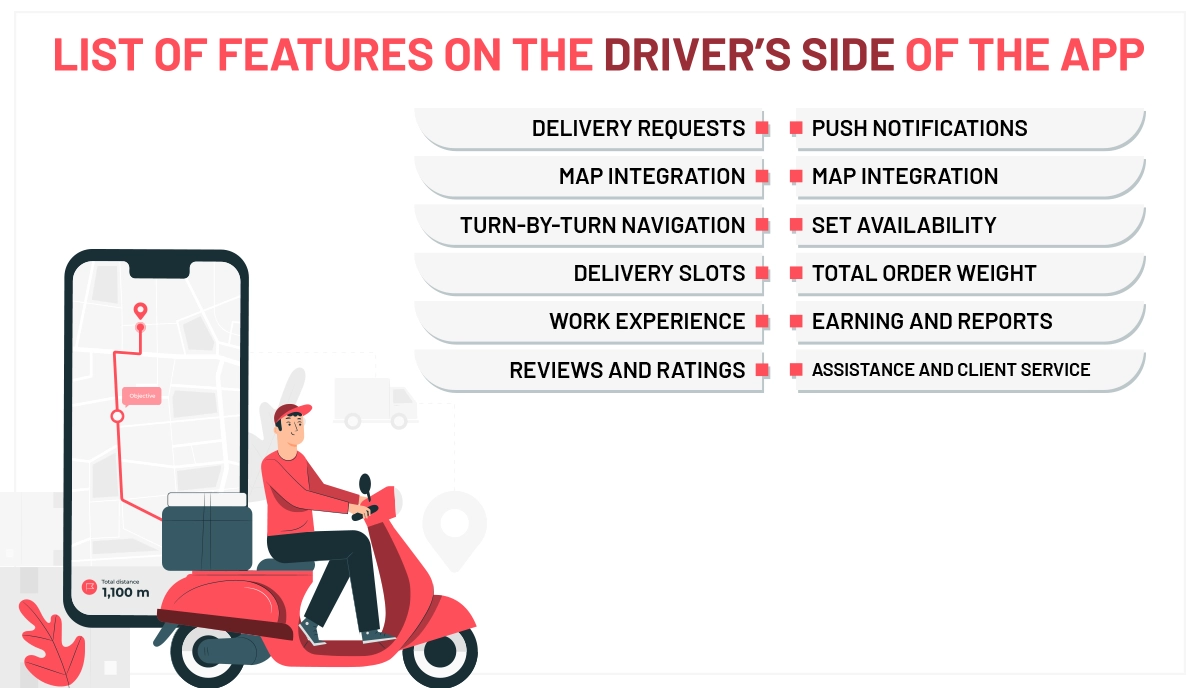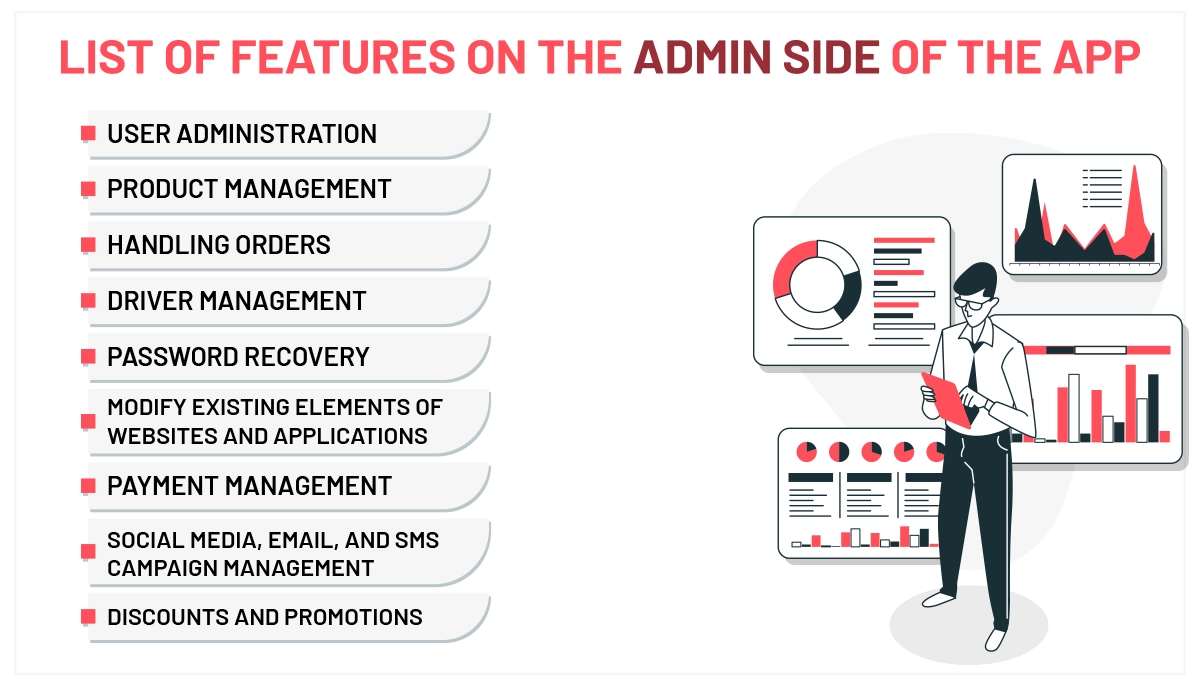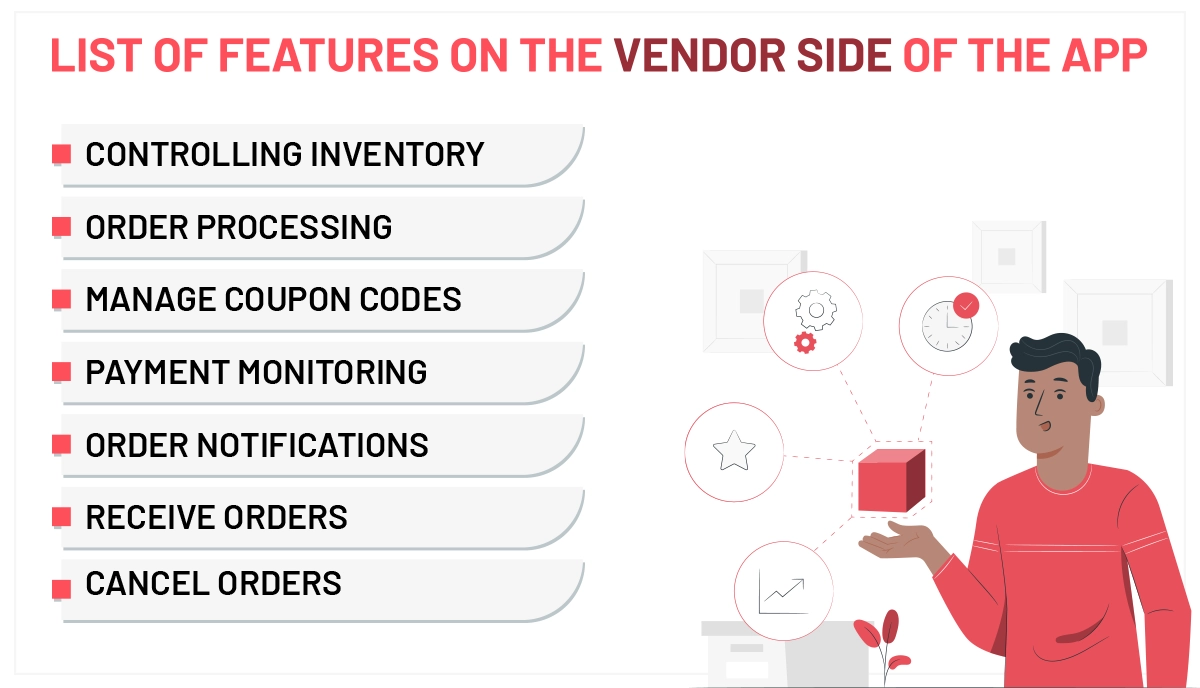Food & Groceries
Empowering the food and grocery industry with cutting-edge technology solutions.
Grocery Delivery App Development Cost Guide

Are you planning to build a grocery delivery app? The major concern for every entrepreneur is the grocery delivery app development cost. If you are seeking an answer to this concern, then this blog is for you.
Technology has significantly changed how people spend and live in today’s fast-paced society. It just takes a few taps on our phones to do everything, from calling a cab to placing a food order. As expected, the popularity of on-demand smartphone applications has spread to grocery shopping, providing a revolutionary new option for shoppers.
The convenience and ease of grocery shopping have been greatly improved with the advent of grocery delivery app development. Customers can now order groceries online and deliver them to their homes, freeing them from the hassle of standing in lengthy lines and navigating busy supermarket aisles. This has led to a dramatic increase in the popularity of on-demand grocery delivery applications, saving customers time and effort.
The article examines the pros, cons, and grocery delivery app development costs. The blog will give essential insights to help you navigate the ever-changing world of grocery app development, whether you’re a company owner hoping to improve your customers’ shopping experience or an entrepreneur looking to break into the lucrative grocery delivery sector.

Those on both ends of the app purchase might reap the rewards from an investment in grocery app development. Listed below are a few of the most persuasive arguments in favor of downloading a grocery delivery app:
Customers may avoid long lines and the hassle of going to the shop using a grocery delivery app. People may shop from a large selection, order, and deliver food to their homes. People with hectic schedules, older people, or mobility issues would appreciate this feature much.
Customers may save time and energy by eliminating visits to the shop when they use a grocery delivery app. With only a few clicks on their cellphones, they can repurchase frequently bought goods, see their purchase history, and take advantage of the convenience of doorstep delivery.
Providing a grocery delivery app is an excellent way for businesses to attract customers beyond their area. With this App, they can reach more people and win over new clients who like the ease of purchasing online. This will boost business.
Apps that bring groceries to your door may tailor their suggestions to your tastes and habits. Businesses may increase consumer engagement and loyalty by using customer data analysis to provide personalized offers and promotions.
Businesses may improve inventory management with the help of a grocery delivery app. Stock levels can be monitored, product availability can be controlled, and the supply chain can be optimized to guarantee on-time delivery. The outcome is increased productivity and less waste.
The digital wallets, credit/debit cards, and online banking alternatives offered by grocery delivery applications are safe and easy. As a result, customers may enjoy a cashless and hassle-free shopping experience without ever having to pull out their credit cards.

There are numerous business models for on-demand grocery delivery apps that may generate money and assure sustainability. Here are three popular business models:
In this setup, the grocery delivery app takes a cut of each sale made via its platform from the participating retailers and providers. This fee is often calculated as a fixed percentage of each order’s final price. It enables the App to earn money on the number of transactions completed on the platform. The app owner and the merchants gain from this strategy since it raises the former’s profile and sales.
As part of its ad-supported business model, the grocery delivery app displays advertisements from third-party sellers and manufacturers. Sponsored content and banner advertising are paid insertions that help businesses get their names out there and in front of potential buyers. Advertising fees paid by merchants are the primary source of income in this strategy. For this business model to be successful, the App needs a sizable user base from which to draw advertising.
The subscription model entails providing consumers with access to premium, paid services. Users can sign up for a premium membership to access perks, including early access to sales, expedited shipping, and priority support. A recurring source of income for the App is a subscription service, which may be given monthly or yearly. Customers that regularly use the App, like its features, and are prepared to pay for a better experience are ideal candidates for this business model.
The grocery delivery app must consider its target market, user base, and competitors to choose the best business model. Some applications use a mix of models to increase potential income and appeal to a broader range of users.
When planning an on-demand grocery delivery app, there are three main features to consider: the customer, the shop, and the Driver. Check out the top four panel features of the grocery app to understand how it operates.

Users may access the customer panel to create an account and place grocery orders using the App. The customer dashboard has the following features:

The Driver’s side or delivery partner panel has tools that will make it easier for the driver or delivery partner to track orders and get them to customers on time.

The admin side provides a simple interface for managing the whole system from the perspective of the client, delivery partner/Driver, and vendor. Some of the most important features are:

Client orders may be easily managed using a streamlined vendor panel, and shipments can be assigned to delivery agents and managed centrally.

In 2023, several major grocery delivery applications emerged. Listed below are five of the best apps that will provide you an insight into grocery app development services:
Instacart is the most well-known and commonly used grocery delivery app in the United States. It serves a large number of cities and provides fresh food delivery the very next day. Different price tiers and door-to-door service are available to customers. Orders placed via Instacart may be picked up at no extra cost from several convenient retail locations.
Dunzo is an app that promises to get goods at your door in 45 minutes or less. Dunzo is more than just a place to acquire your weekly produce supply. It’s a convenient way to have groceries delivered quickly.
The online retail behemoth Amazon has entered the Indian online grocery sector by introducing Amazon Now. Amazon Now, an app for Android devices, lets users order groceries online and have them delivered to their homes. The availability of same-day delivery via the App has helped Amazon increase its food business nationwide.
When it comes to fresh fruits and vegetables, cheeses, and meats, FreshDirect is the App to beat. The company cares deeply about the quality and freshness of its goods. Therefore, it gives its consumers a wealth of information about them, such as star ratings and country of origin. You can trust FreshDirect to deliver your groceries on time and in excellent condition.
Ahold Delhaize owns the online grocery delivery service Peapod. It runs in its warehouses, so you know your food will arrive quickly and in good condition. Peapod also collaborates with retailers like Stop & Shop to provide grocery store pickup. The software provides clients with quick shopping at affordable prices.

Several factors might affect the Grocery app development cost. While it would only be possible to offer an exact price by first studying your needs, you may know what to anticipate if you are familiar with the aspects that affect it.
Creating an app for grocery delivery may cost anywhere from $40,000 to $50,000 on average. This estimate covers the client app, admin panel, delivery agent app, and vendor management app.
Grocery app development costs depend on these factors:
The budget for a project may change depending on how extensive and diverse the development team has to be. Developer teams often include programmers, designers, quality assurance testers, and project managers. The team’s degree of knowledge and experience also affects the Cost. A more expensive price may be required to hire a staff with extensive expertise.
The total Cost of creating your grocery app will vary depending on its complexity and the number of features and functions you want. The fundamental elements are the ability to register users, display products, provide a shopping cart, and accept payments. However, the development price will rise if extras like real-time order monitoring, customized suggestions, loyalty programs, and push alerts are included.
The Cost of developing an app may vary depending on whether it is designed for a single platform (Android or iOS) or many platforms. Because the software must be re-created for each forum, developing them takes more time and resources. Costs may be minimized with the use of cross-platform development frameworks like React Native or Flutter, which allow the creation of Android and iOS apps at the same time.
Putting effort into making your App look excellent and easy to use pays off in happier users and more positive reviews. The development cost may rise or fall depending on the difficulty posed by the design’s UX/UX components, visuals, and animations. If you change the design to fit your brand’s aesthetic, there may be a price difference.
Backend infrastructure development, such as database administration, APIs, and server configuration, may increase the price of a program. The Cost of action will be affected by the backend infrastructure’s complexity and scalability needs.
Payment gateways, SMS gateways, and location tracking map services are all examples of third-party integrations that might increase the overall development cost. The difficulty of integrating these services and any license or subscription costs involved might affect the final price tag.
A well-tested, high-quality software is essential for users’ peace of mind. Functional testing, performance testing, security testing, and compatibility testing across various devices and operating systems may all contribute to the total Cost of testing.
After the program has been released, it will need regular updates, bug fixes, and support from the developers to keep users happy. A budget line item for maintenance and support is essential to keep the App functioning and up to current with user needs.
An exact cost estimate based on your requirements can only be obtained by working with a professional grocery app development company. They can provide you with a comprehensive analysis of the charges and advise you on how to use your resources best to get the most out of the system.

Building an application like Instacart requires a professional development team. Being a leading grocery app development company, we have a vast pool of grocery delivery app developers. Here are the factors to consider while choosing a team of grocery app developers-
Hiring a development team for your grocery delivery apps is a choice that directly affects the application quality and cost. Let us look at the various hiring types and how the team type affects the cost.
The choice of team type depends on your project requirements and budget. Freelancing is an option suitable when you are on a meager budget, and the application is fundamental with little complexity.An in-house team and local agency are ideal when you have a big project or a line of projects to develop. Hiring an in-house team is expensive, but you get complete control over the team and assurance of application quality.Outsourcing a development team is ideal for entrepreneurs who want to hire professional developers at a low budget. Offshore developers generally hold extensive experience working for various clients from different countries across the globe. They bring their expertise to the project and offer complete assurance of its quality and timely completion.
Type of TeamHourly RateCost of an MVPIn-house$80$100,000Local Agency$175$225,000Freelancers$20$25,000Outsourcing agency$40$50,000
The location of the development also has a direct impact on the overall cost. The hourly developer rates vary in each country drastically. Let us look at the hourly costs of some prominent countries-
Hiring grocery delivery app developers from India is an ideal option for business owners on a limited budget. They can get access to talented resources under their budget.
Team locationRate per hourCost of an MVPCost of an appThe USA$150$150,000$200,000Europe$90$90,000$130,000The UK$100$100,000$150,000Ukraine$40$50,000$80,000India$25$30,000$45,000
The ease and efficiency of on-demand grocery delivery apps have completely changed how consumers buy groceries. The rising popularity of online grocery shopping presents an opportunity for companies who invest in a well-designed, feature-rich app. For optimal success, seeking advice from a professional on-demand app development company is recommended.
Glasier Inc is a leading grocery delivery app development company working for several clients globally and helping them take their businesses online.
You can reach out to us for grocery app development services. Drop us a line for a free consultation or a quote.
Share post:
How Much Does it Cost to Develop an App like Uber?
Hospital Management System Guide – Types, Advantages, Characteristics